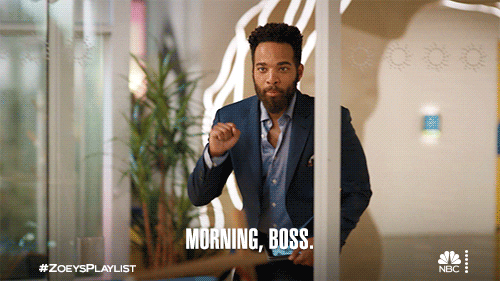I watched a segment on hybrid and remote work maturing in 2022 by The Economist triggered some interesting questions that many of us haven’t had much thought of.
The impact of remote and hybrid work shifted how we approached work over the past 20 months in massively positive ways but also raised some concerns that we may be moving in the wrong direction without seeing the warning signs.
Routine Matters – Until It Didn’t
There’s no question that the pandemic forced governments to make changes in policies which in turn forced businesses to change operation norms towards how we do business. While some jobs did not (or more accurately, cannot) shift to hybrid and remote work conditions due to the fundamental need to have physical access to the production, distribution, or interaction with the product and customer, the majority of jobs done behind a screen and keyboard shifted to remote and hybrid work format relatively quickly.
The shift to remote and hybrid wasn’t without its hiccups, but thanks to the general familiarity with technology of most white-collar roles, the challenges were mostly about changing cultural and routine habits more than technology or business practices.
Losing the rigid, externally-imposed routines such as prepping for a 60-minute commute, planning chores and childcare around work hours, and knowing when friends and family “get out of work” was actually quite a challenge for many.

These routines have guided our lives for so long and put 80% of our waking hours on autopilot.
It was a jarring change for many.
On the easier end of the scale, you have folks whose lives involve routinely socializing with colleagues or the folks they meet and interact with before/after work such as gym/hobby friends on a daily basis now have that routine cut off.
Tougher yet, are the ones who used to, for the lack of a better word, outsource major routine tasks such as child care to schools and daycare now have to deal with being both a full-time employee, parent, and homeschool teacher as well.
The Hedonic treadmill theory applies, however, where the tendency of humans to quickly return to a relatively stable level of happiness despite major positive or negative events or life changes (source: Wikipedia). We find ways to adapt and find new normals and eventually adapt.
Realignment of Priorities – Empathy That We’re Humans At Work
As we adapt to our new environment, we’ve seen a rise in awareness and mindfulness of what matters from an internal perspective, wherein the line between who we are as a person versus who we are as a professional becomes more pronounced.
At the workplace, surprisingly, because everyone has to go through this change, we suddenly see everyone at work beyond their personas within the office.
It seems strange that prior to the pandemic, the idea of our co-workers having a life outside of the confines of the office seem like an abstract thought.
We are often surprised and intrigued to hear about our colleague’s interest in a hobby, or that they have children or pets even if we’ve interacted with them on a daily basis for years.

Nowadays, we probably know vaguely how our colleague’s living or study room looks like, what their pets’ names are, and clues about their interests and hobbies are from the trinkets unblurred from video chats.
Companies have done a lot to try to adapt to these new norms as well. We’ve seen companies try to balance productivity, control, wellness, and costs through rebalancing workdays, setting clearer time allocations for meetings and updates, alongside the technology required to get the work done.
These are not simple solutions or initiatives to deploy, regardless of company size, so credit where credit is due here.
Connection Still Matters – Beyond the Screen
All is not rainbows and butterflies, however, as everybody gets comfortable with the new normal, despite the challenges, we generally all agree that the 40+ hours in the office plus commute times probably won’t be the norm for most white-collar jobs done behind a computer screen.
There are levels of maturity that employees accept some parts of being an effective professional and expert at their jobs require physical collaboration and relationship building.
Cultural and emotion-based connections will almost never be as effective without a firm handshake, being a host to a foreign partner, or just the simple act of looking someone directly in the eye to convey a message.

Whatever it is we miss about being able to physically connect with our loved ones, the same rules apply at work. It may not be for the same reason, but being humans, social connections play a huge role in everything we do.
Progress Can Also Move Backwards, Unfortunately
Technology is a double-edged sword, however. As efficient and flexible as technology is, at the end of the day, it’s a tool that can be used by everyone for their own agenda, and that includes reverting back to the old norms.
After close to two years of maturity in using virtual, distance-based interaction, we’re finding ways to adapt to that hedonic treadmill again, consciously or not, but this time, for the more negative norms in the workplace we’ve accepted in the past.
Specifically, subliminal and unconscious biases, microaggressions, and prejudices that favor the incumbent segments of cohorts in a working environment.
These can be racial, cultural, gender, or just internal politics that have been around for over a century.
We need to be aware of these tendencies regardless of whether we’re employers or employees or we’ll revive problems with exponentially more powerful tools at our disposal.
Unconscious Bias Against Parents – Particularly Disadvantaged Family Units
As mentioned above, the hybrid and remote working environment forced many parents to play multiple, full-time roles for at least 12-15 hours straight daily and that takes a tremendous toll.
Needless to say, single parents, lower-income families, families with special needs, or just folks who don’t have the space to segment their at-home lives are significantly more disadvantaged than those with larger houses, multiple rooms, babysitters or helpers, or just having washer/dryer machines and dishwasher units in the house to take care of things outside of work.
The Atlantic has this superb piece on how much more working mothers’ careers are at risk than ever before during this pandemic. Even for a high-ranking, VP-level title, an interviewee cited:
“I also worry that my performance is being judged because I’m caring for my children. If I step away from my virtual desk and I miss a call, are they going to wonder where I am? I feel that I need to always be on and ready to respond instantly to whatever comes in. And if that’s not happening, then that’s going to reflect poorly on my performance.”
Source: The Atlantic: Mothers’ Careers Are at Extraordinary Risk Right Now
Especially in regions of the world like Asia where employment and interview practices are still very openly biased, questions and criticisms like “how will you focus if you have children in the house?” are considered to be valid qualifiers to reject candidates, the inability to present your best foot forward as a professional through a screen is a major concern.

While most larger companies probably don’t have this level of explicit bias (litigation risks play a factor), most of these practices are unconscious and deeply-ingrained biases that are hard to break.
Justification of Mistrust
Technology’s core advantage revolves around data. The notion that what is countable is quantifiable led to the advancement of software tools that made businesses (and our lives) so much more efficient.
The rise of remote work puts one human-nature, management folly on overdrive, the need for control.
From our school days to our working years, we use attendance as the baseline metric for compliance and success. As our responsibilities and yardstick grow, more metrics are tracked and quantified as the basis for advancement. But here’s the problem, the baseline is no longer available for remote working in most cases (or can be easily achieved by pressing some keys versus having to commute and punch a card) and many companies and managers feel like they’re losing control.
Despite the overwhelming data that productivity has skyrocketed over the past 24 months during the pandemic, with business output figures supporting this data, many companies and managers can’t get past the need to count and quantify productivity.

Tech companies quickly went, “Say no more, fam!” and employee monitoring and tracking software adoption skyrocketed.
Employee monitoring software solutions aren’t new, they’ve been used on freelancing sites like Upwork for decades as the majority of the jobs there are done by remote workers you’ve never met and will probably never meet physically in your lifetime.
However, the freelance, project-based context is very different from a permanent, full-time role in that the lines between psychotic privacy encroachment, mistrust, and productivity quantifying are blurred.
Granted, some roles, particularly entry-level and quota-based daily production roles benefit from such tracking, most white-collar jobs don’t fall into this space, and this is the segment where employee monitoring tracking software tends to focus.
The mistrusting culture will bleed and infect the entire company’s culture negatively far worse than the pandemic for the business, it does more harm than good, as cited by this Forbes article – More Monitoring Of Remote Workers Raises Management And Trust Issues:
“From the employee perspective, work monitoring software can create a lot of pressure, causing people to be extremely cautious about their activity online. Some may even randomly click on the keyboard in order to increase productivity thereby jeopardizing their main work. Somehow these employee monitoring tools become the primary focus instead of being extra help for understanding how people perform.”
Forbes: More Monitoring Of Remote Workers Raises Management And Trust Issues – Edward Segal
In my personal opinion, if an employer can’t trust a working adult to work without a shadow lurking 24/7, perhaps it’s better to invest in full automation and robotics instead.
Presenteeism Bias in Opportunities
Lastly, I want to cover presenteeism.
Ironically, the topic of presenteeism revolves around the problem of employees showing up when they’re not supposed to, specifically, when ill or unwell and their inability to perform at their capacity costing the company.
The idea that the financial and stigma of being “absent” or taking time off, particularly for non-salaries workers, led to more workers showing up at work while being ill actually costs the company more productivity and money due to the worker’s inability to work at their best while also spreading the risk to the healthy workers (reference: Investopedia).
Fast forward to 2022, we’re told not to show up to not spread viruses, and that’s how it should be. But the definition of presenteeism changes to management psychology instead.
Presenteeism related to management covers being physically in your work desk, within visibility and proximity of your bosses and peers regardless of actual productivity and output.

If you take a look at your digital calendar the past year and compare it to pre-pandemic, you’d probably be shocked at the volume of “booked” slots you’ve had the past 2 years.
The results were alarming in a recent Microsoft study, Jared Spataro, Microsoft corporate vice-president stated:
“People spend 148% more minutes in weekly Teams meetings… An average user is sending 42% more chats after hours, and 200% more chats on weekends. Our customers received 40 billion more emails in February of 2021 than in February of 2020.”
If you base it purely on business output, targets, and needs, it’s highly unlikely that your output requirements demanded that much begin with. So where do all these meetings, chats, and “regrouping” hours end up? Odds are high that these excess hours are poured into presenteeism needs to “prove” to others, particularly your bosses, that you exist and you’re contributing
That’s a disturbing notion to realize, that our actual output, contributions, talents, and dedication take a back seat to “showing up” and “being visible” to quantify our worth.
BBC covered the common negative outcomes of presenteeism such as depression as well as the tendencies of companies’ long-standing bias of being present is more valuable than being productive, hasn’t changed, but the remote working conditions we have not to exacerbate the problem for the already disadvantaged group of people such as women, single parents, minorities, introverts, and those who dislike playing politics and favoritism at the workplace.
The odds that the single, male, extroverted, political-savvy, and less disadvantaged individuals will have greater motivation, flexibility, restrictions, and access to return to hybrid or full on-site work to achieve presenteeism will have lasting negative effects on overall corporate culture, social equality, and fair work practices.
Conclusion
The past two years (and counting) offered the world an opportunity to improve and change what we all deemed as “that’s just the way it has always been” norms in the workplace.
Thanks to technology, we’ve been able to accelerate the positives of hybrid and remote work to amplify our personal value towards work, incorporate who we are as an individual to our career persona, and lower barriers of entry to opportunities that were reserved for the privileged.
The temptation to revert to the bad practices of the past while using even more effective and powerful technology to amplify these archaic norms should be actively resisted.
For companies and bosses, being honest about the unconscious bias of actual day-to-day practices of your leaders play an immense part to prevent these negative biases to occur at scale.
For individuals, speaking up, calling out instances, and not being an active participant in these biases are strong starts. We all can contribute to a more inclusive and positive work environment with our daily routines.
Ultimately, as a society, what are we after? A simple blend of professional accomplishment with a great dose of self-appreciation, and a society we enjoy living in.
By the way, here’s the video I mentioned at the start of this article from The Economist.


0 Comments